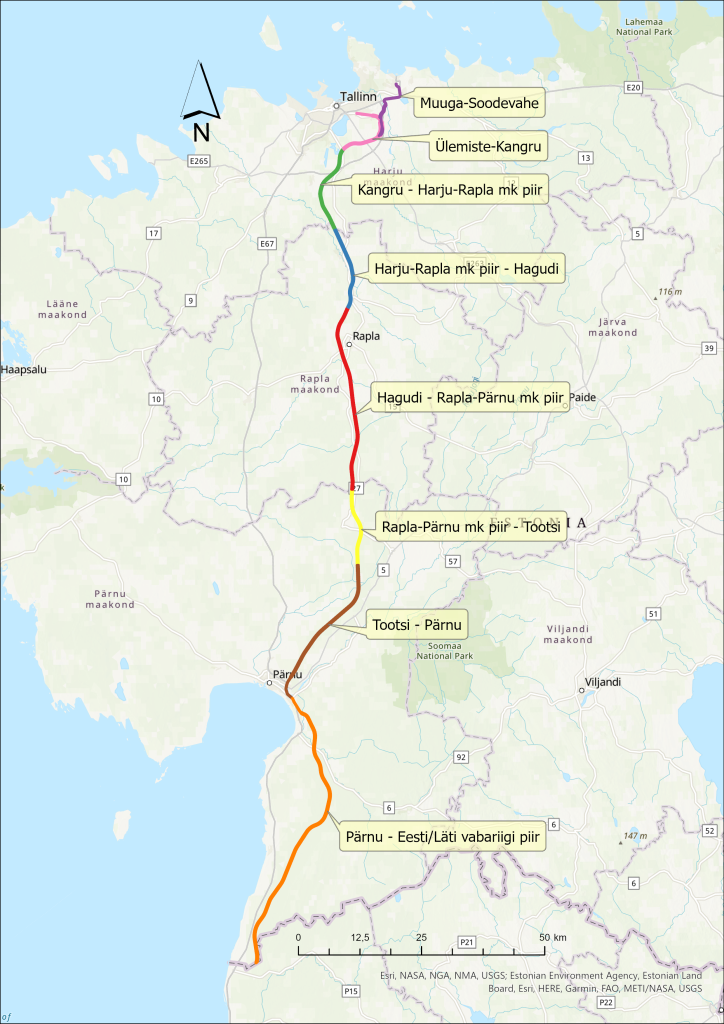Most recently, in early April, the Technical Regulatory Authority (TTJA) confirmed the compliance of the environmental impact assessment for the approximately 19-kilometer section from Kangru to the border of Harju and Raplamaa counties in Harju County. Now, additional sections have also been deemed compliant by the authority.
According to Kärt Mae, the Environmental Manager of Rail Baltic Estonia, Rail Baltica national implementing body in Estonia, the impact assessment process has progressed at a good pace. “To date, five out of eight EIA sections, accounting for nearly half of the railway infrastructure in Estonia, have been declared compliant with the TTJA requirements. The environmental impact assessment is an important prerequisite for us to move forward with the construction,” said Mae. According to current plans, construction on these sections could begin within the next couple of years.

The 39.3-kilometer section from Hagudi to the border of Rapla and Pärnu counties underwent the EIA process concurrently with the preparation of the railway master design. The section passes through mostly sparsely populated areas with agricultural and forested land between settlements. Within the evaluated section, the planned activities will affect the Taarikõnnu-Kaisma urban area, which is domestically protected as a permanent habitat for the Capercaillie. Possible impacts and disturbances will be mitigated by the implementation of designed noise barriers.
Throughout the impact assessment, the principle has been followed that the solutions in the master design must provide at least the same level of mitigation for environmental impacts as those presented in the preliminary design. Environmental experts, in collaboration with the design team, have developed suitable solutions to avoid negative environmental impacts and identify effective mitigation measures. In cooperation with wildlife experts, measures have been identified to ensure wildlife movement possibilities, maintain habitat quality, and prevent wildlife from accessing the railway. Noise experts have assisted in determining the locations and dimensions of noise barriers.
The EIA was also conducted for a 16-kilometer section from the border of Rapla and Pärnu counties to Tootsi, located in the northern part of Pärnu County. The environmental experts, the design team, and the railway developer aimed to find suitable solutions to avoid negative environmental impacts and identify effective mitigation measures to ensure wildlife movement possibilities, maintain habitat quality, and prevent wildlife from accessing the railway.
This section is in the transitional zone of Central Estonian forests and bogs. The planned railway will pass through three major green corridors but will avoid the core areas of the green network. The impact will be mitigated through the construction of numerous wildlife crossings. To ensure the functionality of large wildlife passages (three wildlife viaducts will be built within the section), the EIA proposes the establishment of protection zones with a radius of 500 meters.
Natura assessment determined that the proposed activities would not have a direct impact on the Taarikõnnu nature reserve, but the construction of embankments and side ditches could affect the water regime in a small area, potentially negatively impacting the protected habitat types. The negative impact on the water regime can be alleviated by closing an existing ditch located at the edge of the nature reserve. Monitoring of the water regime is foreseen in the affected area to assess the effectiveness of the mitigation measure. Implementation of the mitigation measure prevents negative impact on the integrity and conservation objectives of the Taarikõnnu nature reserve.